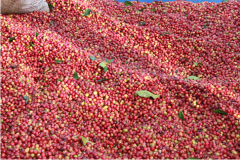Is it better to peel apples or not to peel them? Is the apple peel waxy natural wax or processed wax?
Apple winter management technology is more difficult, but apples will appear in the market all year round, even in the refrigerator at home, which are natural fruit wax and which are artificial fruit wax? How to deal with the most peace of mind before eating?
When buying apples in the market, the most common question is "is the shiny apple natural or processed?" "" should I buy something from abroad or Taiwan? "" what should I do with wax in the peel? "
The apple itself has natural wax!
Generally speaking, the surface of the apple has tiny holes, which volatilize water through respiration. In order to maintain its own moisture, the apple naturally produces a layer of natural fruit wax (plant protective layer), which slows down the respiration and slows down the water loss. In addition, it can also protect against the sun, cold, and prevent outside microorganisms and pesticides from invading the fruit. Eating natural fruit wax will not harm human health.
Why does the peel still need to be waxed?
Usually, the main purpose of waxing the pericarp is to prolong the preservation of apples. In the non-Taiwan apple season, if you want to eat apples, you have to rely on imports. Foreign fruits have to go through long-distance transportation before they can be sold in Taiwan's market. In the process, the pericarp will become wrinkled due to water loss and sell poorly, so in order to maintain the original moisture and glossiness of apples. An extra layer of artificial fruit wax must be applied to the skin of the apple to increase the number of days of preservation.
What is artificial fruit wax?
Artificial fruit wax is divided into edible wax and industrial wax.
Edible wax is a food additive, a kind of chitosan, which is mainly used to keep apples fresh and prevent them from losing water and spoiling. they are mostly used in imported apples, such as Chilean apples and New Zealand apples. Since domestically produced apples do not need to be transported for a long time, basically fruit growers do not add an extra layer of wax to increase their costs. As long as the edible wax that does not exceed the standard is properly washed before consumption, it will not endanger human health.
Industrial wax contains mercury and lead, which can penetrate into the pulp through the peel. In order to reduce costs and increase the freshness and gloss of apples, some unscrupulous merchants use cheap industrial wax to apply to the surface of apples. It must have a great impact on human health! When selecting apples, wipe the skin a few times, if there is a light red, do not buy!
The following is whether the experiment is really effective in judging "natural fruit wax" and "edible wax" according to the four ways recommended on the Internet.
The Jinlight apples and Qiuxiang apples used in the experiment were taken directly from farmers and were not waxed, while Chilean apples were bought from the market and waxed.
1. Judge directly from the gloss of the fruit itself. Apple waxed luster
two。 Using a fruit knife to scrape the white powder from the pericarp is edible wax. Apple has a white powder, indicating that it is not certain that the white powder is edible wax, not natural fruit wax.
3. After rubbing the surface, a smoother surface indicates waxing. As you can see from the two pictures below, the rounded friction is brighter than other parts, whether waxed or unwaxed apples. In order to avoid affecting the observation because of different light source angles, change the direction of the two peels, and the results are the same!
4. Put the apple in hot water and dissolve the white substance to indicate waxing. After the apples are soaked in hot water, there is a white substance on the top of the apples, and the waxed Chilean apples are the most obvious. when they are soaked in hot water, they produce small white bubbles on the edges of the apples, and finally become white substances attached to the surface of the apples. The other two unwaxed apples have only a light, thin white substance, but it is still not certain that the white substance is artificial fruit wax!

- Prev

Introduction of Apple Variety Tuoji and Caixiang Apple, the difference in taste between Tuoji and Caixiang Apple
It is difficult to manage apples in winter, but the nutritional value of this fruit is relatively high, and there are many varieties. Do you know Tuoji and Caixiang these two apple varieties? What is the difference between them? Since the registration of varieties in 2004, it can be regarded as
- Next

Wind bell tree varieties: the difference between golden wind bell tree and magenta wind bell tree, there are several breeding methods.
The genus Tabebuia is a tropical tree species, which grows well in the central and southern flatlands after it was introduced to Taiwan. Horticultural landscape cultivation is increasing in recent years. It is wet and cold in winter in the north, so it is necessary to guard against cold damage. There are two main varieties: Golden blueberry and magenta.
Related
- Fuxing push coffee new agricultural production and marketing class: lack of small-scale processing plants
- Jujube rice field leisure farm deep ploughing Yilan for five years to create a space for organic food and play
- Nongyu Farm-A trial of organic papaya for brave women with advanced technology
- Four points for attention in the prevention and control of diseases and insect pests of edible fungi
- How to add nutrient solution to Edible Fungi
- Is there any good way to control edible fungus mites?
- Open Inoculation Technology of Edible Fungi
- Is there any clever way to use fertilizer for edible fungus in winter?
- What agents are used to kill the pathogens of edible fungi in the mushroom shed?
- Rapid drying of Edible Fungi

